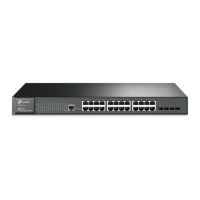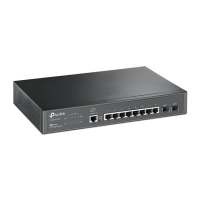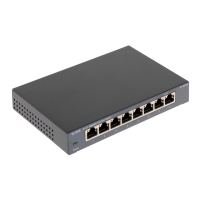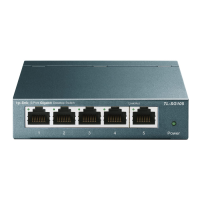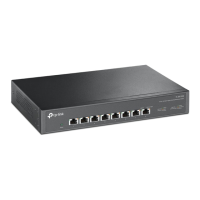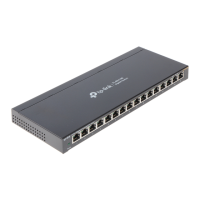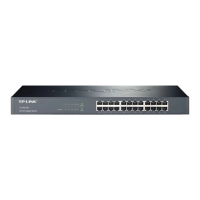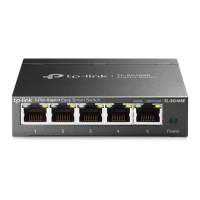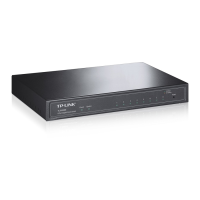224
Parameter
tag/cos-id —— The 8 priority levels defined by IEEE 802.1P or the priority level
the packets with tag are mapped to, which ranges from CoS 0 to CoS 7.
tc-id —— The egress queue the packets with tag are mapped to. It ranges from
0 to 7, which represents TC0 toTC7 respectively.
Command Mode
Global Configuration Mode
Privilege Requirement
Only Admin, Operator and Power User level users have access to these
commands.
User Guidelines
1. By default, the mapping relation between tag/cos and the egress queue is:
0/CoS 0-TC1, 1/CoS 1-TC0, 2/CoS 2-TC2, 3/CoS 3-TC3, 4/CoS
4-TC4, 5/CoS 5-TC5, 6/CoS 6-TC6, 7/CoS 7-TC7.
2. Among the priority levels TC0-TC7, the bigger value, the higher
priority.
Example
Map CoS 5 to TC 2:
T2600G-28TS(config)# qos queue cos-map 5 2
29.4 qos queue dscp-map
Description
The qos queue dscp-map command is used to configure the mapping relation
between DSCP Priority and the CoS value. To return to the default configuration,
please use no qos queue dscp-map command. DSCP (DiffServ Code Point) is
a new definition to IP ToS field given by IEEE. This field is used to divide IP
datagram into 64 priorities. When DSCP Priority is enabled, IP datagram are
mapped to different priority levels based on DSCP priority mode; non-IP
datagram with IEEE 802.1Q tag are mapped to different priority levels based on
IEEE 802.1P priority mode if IEEE 802.1P Priority is enabled; the untagged
non-IP datagram are mapped based on port priority mode.
Syntax
qos queue dscp-map { dscp-list } { cos-id }
no qos queue dscp-map
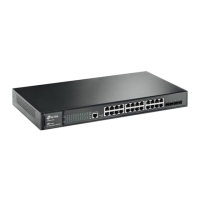
